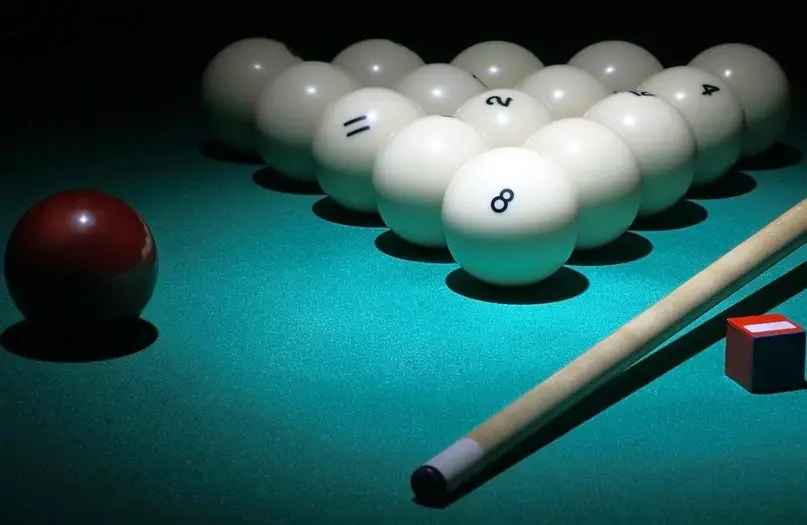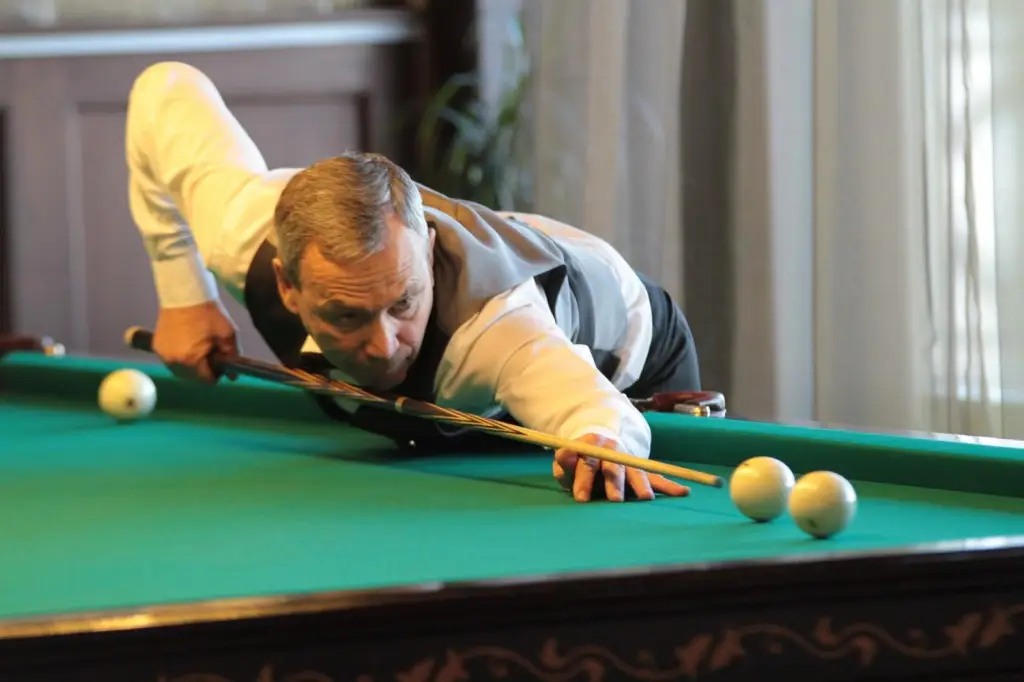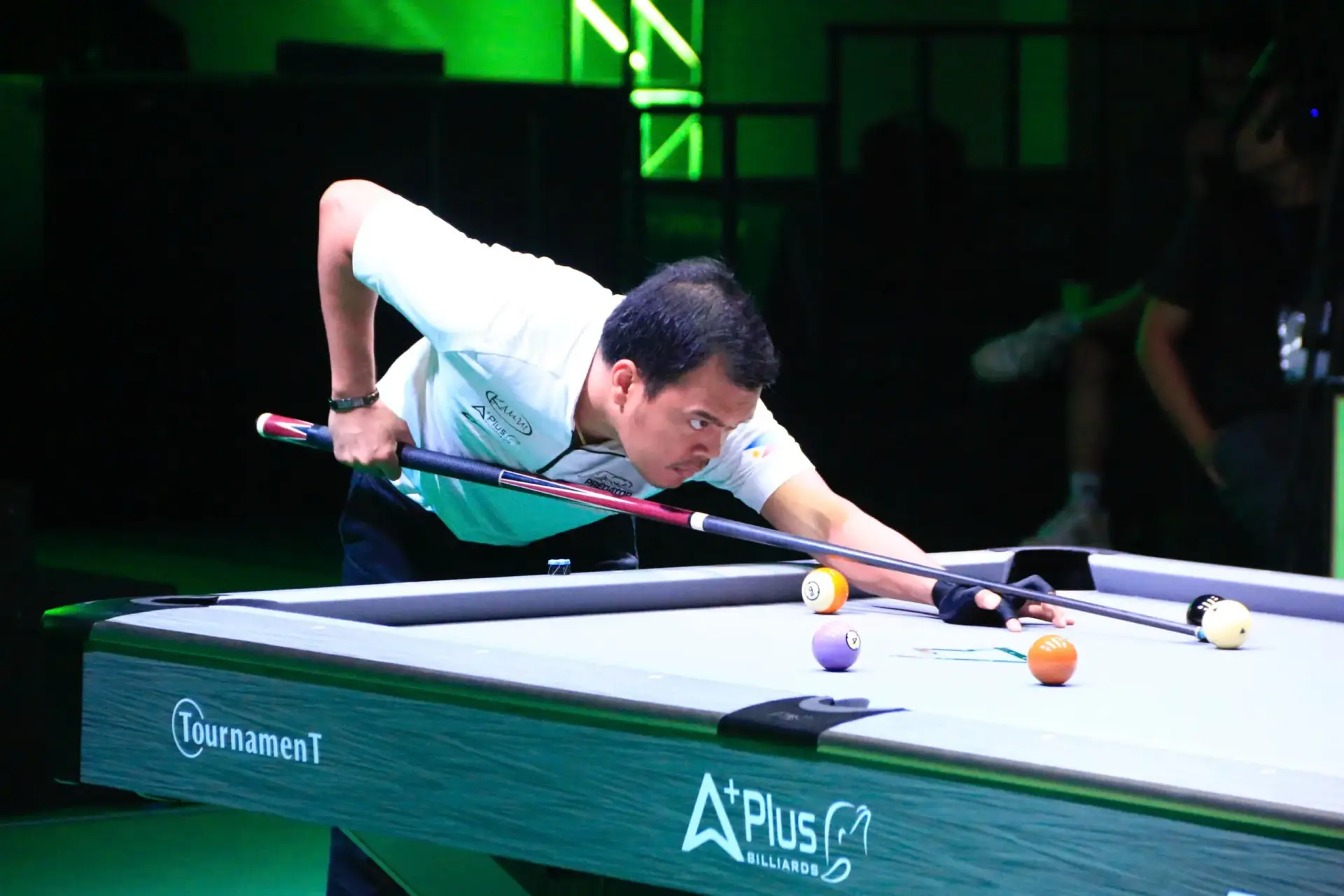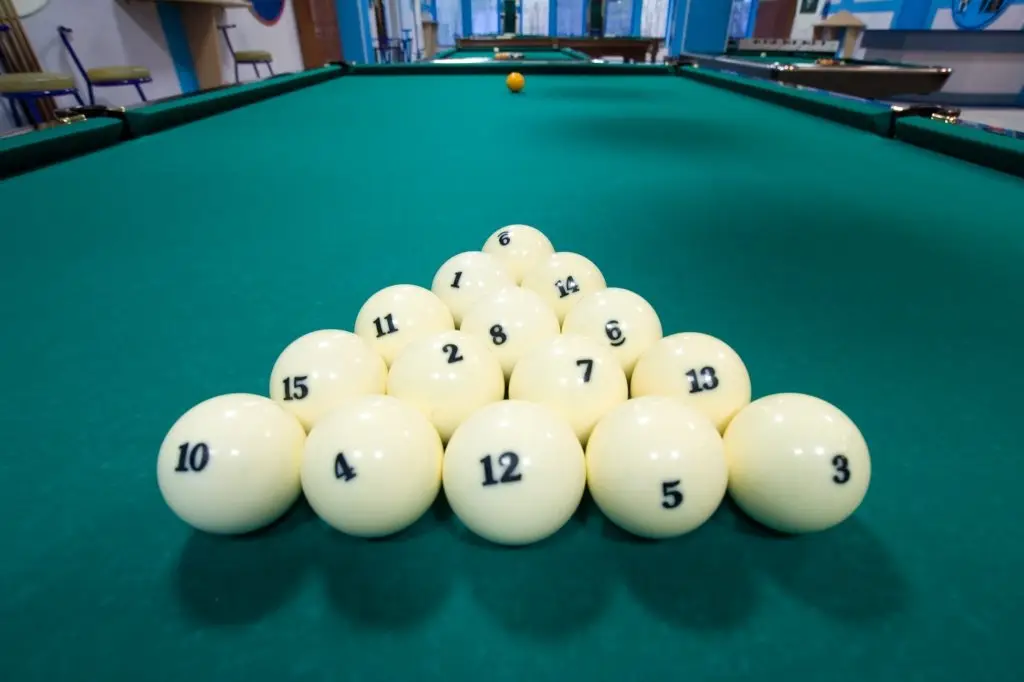Russian billiards requires not only precision, but also a clear understanding of the mechanics of the shot, calculating trajectories and discipline in movements. The difficulty lies in the small radius of the pockets, the strict rules and the high demands placed on each element. To understand how the balls are pocketed in Russian billiards, it is important to master the basic principles and turn them into an automated system.
The basis for an accurate shot: how to pocket balls in Russian billiards
Before potting balls in Russian billiards, you need to align your body with the line of attack. Posture is the starting point for control.
Posture of the body and hands
With the correct posture, the shoulders are aligned with the point of contact between the cue and the target ball. The hand forms a stable support and the elbow is positioned directly above the line of the cue. The knees are bent and the back is straight; this posture ensures stability of the body during the shot. The shoulder and forearm work as a single lever.
Guideline
The way the balls are potted in Russian billiards depends on the accuracy of the target. The gaze focuses on the point of contact between the cue and the cue ball, and then on the point where the target ball enters the pocket. The shooting line is aligned tangentially rather than linearly. This is especially important when cutting.
Control of the cue ball and shooting technique
 Russian billiards is not based on strength, but on precision, calculation and foresight. Physics, geometry and motor skills work together in delicate balance during the shot. To understand how to consistently pot balls in Russian billiards, the player determines the point of contact not only based on the position of the target ball, but also based on the backward trajectory of the cue. Every millimetre of the movement is part of the formula.
Russian billiards is not based on strength, but on precision, calculation and foresight. Physics, geometry and motor skills work together in delicate balance during the shot. To understand how to consistently pot balls in Russian billiards, the player determines the point of contact not only based on the position of the target ball, but also based on the backward trajectory of the cue. Every millimetre of the movement is part of the formula.

The correct contact is the basis of the entire game. The cue must transfer the force precisely to the calculated point without deviating vertically or horizontally. A minimal shift causes a disruption of the movement vector, and the ball deviates and loses its trajectory. If the shot is too hard or uncontrolled, the cue may jump, miss the contact point, and destroy the position.
Elements of the shot: how to pot balls in Russian billiards
To lay the foundation, a beginner practises three basic types of shots. These form the basis for potting balls in Russian billiards in a real situation, not only during training, but also under pressure. Elements:
- Rolling shot. In the rolling stroke, the cue hits the ball slightly above the centre. This creates a positive spin that helps the ball roll further after impact. This type of stroke is suitable for short and medium distances, when the ball needs to be gently pushed towards the next target ball or placed under the stroke. Important: too much force destroys the trajectory; softness is the decisive factor.
- Back spin shot. The back spin technique uses backward spin. The cue hits the bottom of the ball and gives it a backward spin. After hitting the target ball, the cue returns to its starting position or moves diagonally away, depending on the angle of cut. For the back spin to work, the cue must follow a straight line. At the moment of contact, it is important to maintain speed and not slow down the movement.
- Spin. The sideways spin is created by hitting the left or right side of the cue. This allows you to avoid other balls, change the trajectory after contact or roll the cue to the desired area. The spin requires absolute control: a diagonal stroke without aligning the line causes an uncontrolled movement of the ball. This technique is used in tactical situations or in difficult positions.
Control after the stroke: positioning
A professional distinguishes a stroke not by the beauty of the impact, but by the quality of the continuation. To avoid interrupting the sequence, each ball is placed as a link in a chain. It is not only important to strike, but also to maintain position, prepare the next attack and control each bounce. Training to pot balls in Russian billiards also involves understanding where and how the white ball rolls.

After the shot, you need to stop in the comfort zone for the next shot, no less than 20 cm from the cushion, not in the corner and not between groups. This way, you can freely choose the type of shot you want to make: straight, diagonal, or slanted. To work with the positions, you need to understand the speed, rotation, rebound angle, and relief of the table. A single correct shot is the result of dozens of similar attempts during training.
Choosing a cue and preparing equipment
The equipment determines the result. The way the balls are potted in Russian billiards depends directly on the cue. The wrong choice affects accuracy, disrupts the balance of the stroke and gives the wrong feeling in the hand. The cue must not only ‘fit well in the hand,’ but also obey the fingers as an extension of the nervous system. Parameters:
- Weight. A light cue (less than 700 g) does not provide stability. It is suitable for short shots or beginners. A cue weighing 720 to 760 g guarantees a reliable trajectory and comfort when striking. A cue that is too heavy (more than 800 g) requires a trained hand and is only suitable for experienced players.
- Balance. A shift in the centre of gravity affects the centre of gravity of the stroke. If the centre of gravity is closer to the turnyak, the cue ‘works’ on its own, especially with backhand shots. If the centre of gravity shifts towards the handle, the shot is easier to control, which is important for hard shots. The universal centre of gravity is 42-45 cm from the end of the cue.
- Turnyak. The diameter of the tip affects accuracy. With a diameter of 12 mm, the player gets high control. With 13 mm, sensitivity decreases, but reliability increases. Material: pressed leather of medium hardness. A tip that is too soft absorbs the impulse, a tip that is too hard ‘slides’ away and causes incorrect contact.
Techniques for handling the ball: trajectory, cut, position
Control over the trajectory of the cue ball is the basis for a successful game. To understand how to pot balls in Russian billiards under all circumstances, it is necessary to develop a system of predictable movements. This is achieved by studying trajectories and cuts in practice.
Construction of the trajectory
The ball does not move in a straight line, but reacts to each contact: with the cushion, the cloth or another ball. To construct the trajectory, the player assesses:
- the angle of incidence;
- the point of contact on the cue;
- the point of contact of the cue ball;
- the expected number of contacts with the cushion.
If the target ball hits the cushion at an angle of less than 20 degrees, it loses energy and deviates. At an angle of more than 45 degrees, it can rebound. To get the ball into the pocket, the shot must be accurate to the millimetre.
Precision training and systematic approach
Success is not achieved by luck, but by repetition. To understand how to safely pocket balls in Russian billiards, the player practises the basic techniques daily. Gradually, the speed and difficulty are increased.
The uniform training programme includes:
- 30-50 ‘hand’ shots in the short cut;
- 20-30 average shots with cue transfer;
- 10-15 long diagonal shots;
- 5-10 shots over an obstacle.
Beginners’ mistakes
To understand how to effectively pocket balls in Russian billiards, it is important to avoid systematic mistakes. The most common ones are:
- Unstable posture. Poor body control causes swaying, which affects the accuracy of the shot, even with weak shots.
- Incorrect shot line. A shot at the wrong place on the cue or the target ball leads to an unpredictable trajectory.
- Too hard a shot. Too much force affects accuracy. The ball ‘jumps’ and deviates from its trajectory.
- Lack of spin at the right moment. With a direct shot, spin is not necessary, but with sideways trajectories, it is essential.
- Poor control of the cue after the shot. Without the correct position, the next attack is impossible and the sequence is interrupted.
- Ignoring training on an empty table. Skills are not consolidated without repeatedly doing the same exercises.
Conclusion
 This format requires discipline, patience and an understanding of the mechanics. The ability to make accurate shots in Russian billiards requires clear technique, working on mistakes and practising standard positions. With each shot, the player builds a logical chain: posture, aim, action, control, follow-through. The right training system turns the game into a professional art, where every ball potted is the result of hundreds of hours of perfected movements.
This format requires discipline, patience and an understanding of the mechanics. The ability to make accurate shots in Russian billiards requires clear technique, working on mistakes and practising standard positions. With each shot, the player builds a logical chain: posture, aim, action, control, follow-through. The right training system turns the game into a professional art, where every ball potted is the result of hundreds of hours of perfected movements.
 en
en  ru
ru  de
de  ar
ar  es
es  nl
nl  hi
hi  fr
fr  it
it  pt
pt  el
el 



